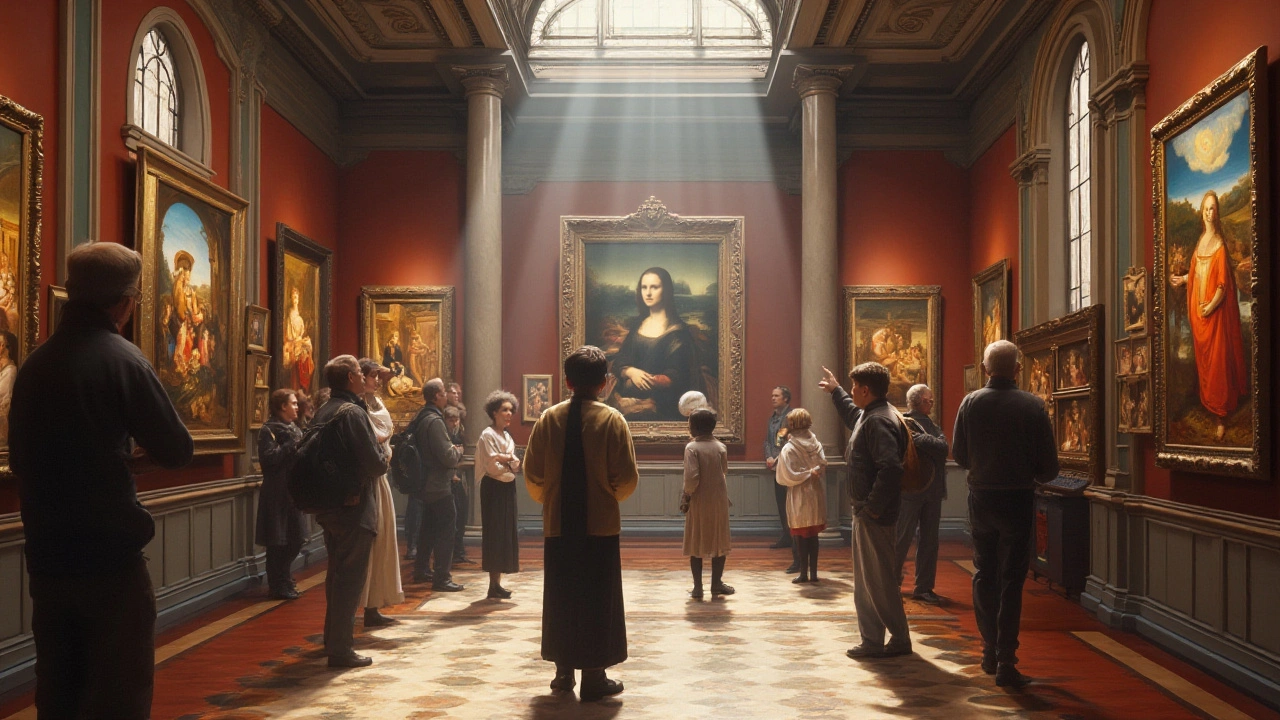Renaissance Art offers a fascinating view into a time when creativity flourished and boundaries were pushed. This article delves into the key aspects of the Renaissance period, highlighting the significant artists, artistic techniques, and cultural influences that shaped this extraordinary era. Learn about the impact of Renaissance art on modern times and discover tips for appreciating these historical masterpieces.
Paintings and Architecture: How Paintings Change the Way We Use Space
A painted wall can make a room feel larger, a facade more welcoming, or a plaza suddenly memorable. Paintings aren’t just decoration — they steer how people move, feel, and remember a place. This page collects posts that show painting’s role across history and styles, from ancient frescoes to modern murals.
How paintings transform buildings
Think of Renaissance frescoes in churches: they turn flat ceilings into story-filled skies. In homes, decorative panels and murals set a mood—formal dining rooms often use rich colors and figurative art; casual rooms lean toward landscapes or abstract pieces that relax people. On the street, murals can define a neighborhood, cover an eyesore, or honor local history.
Painted facades and trompe-l'œil (trick-eye) canvases also change scale. A painted column or window can add rhythm to a bland wall without costly structure work. In public buildings, large-scale paintings guide foot traffic—bold floor or wall graphics mark entrances, exits, and gathering spots more clearly than signs.
Style matters. Classical interiors use figurative and allegorical paintings to add gravitas. Modern and neo-futurist buildings often pair minimal architecture with vibrant abstract murals for contrast. Spotting these choices helps you read a building’s purpose: civic spaces tend to use narrative paintings; commercial spots lean on brand-focused imagery.
Practical tips: choosing, placing, and caring for painted works
Choose for scale first. A small painting gets lost on a tall wall. Measure the wall and pick art that fills roughly two-thirds of the visible height for balanced impact. Color controls mood—cool blues calm, warm reds energize—so match palette to the room’s function.
Placement is about sightlines. Hang art at eye level in corridors and living spaces. For ceilings or high walls, use larger motifs or repetitive patterns so the eye finds a rhythm. In outdoor projects, pick paints made for weather and UV exposure; murals last longer when the wall is prepped and sealed professionally.
Preservation is simple but often missed: control light, humidity, and touching. Use UV-filtering glass for framed works. For murals, schedule gentle cleanings and touch-ups rather than full repaints. For historic paintings like frescoes, consult conservators—wrong cleaning can erase centuries of work.
Want to commission a piece? Start with a clear brief: size, visibility, budget, expected lifespan, and community permission if it’s public. Ask for sketches and mockups placed on photos of the actual wall so you can see the result before work begins.
Paintings in architecture are practical tools, not just pretty things. They solve visual problems, tell stories, and give spaces personality. Browse the linked articles to see real examples, spot historic techniques, and get hands-on tips for bringing painted art into your next project.

